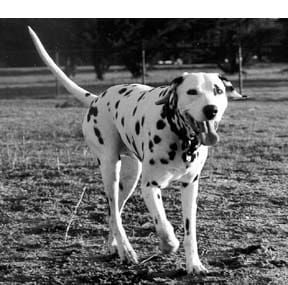For many years, I have bred and raised cocker spaniels, and have found that they, like most dogs, do much better on a diet mainly consisting of raw meat. However, when I sell my dogs and puppies, I often have a hard time convincing other people to continue this diet. Could you get a veterinarian who believes in this type of diet for dogs to support my position?
We turned this question over to veterinarian Pat Bradley, of Conway, Arkansas. A graduate of Louisiana State University, Bradley practiced conventional veterinary medicine for 10 years before opening an all-holistic practice five years ago.
In the early days of my holistic practice, I tried, like you, to tell people that they had to feed their dogs raw meat. I found, like you, that the idea scared some people so much they would leave my practice. I agree that a raw meat diet is the healthiest for many dogs, though there are always exceptions; dogs are individuals, after all, just like humans. But now, I’m more gentle and flexible about my diet recommendations, and I try to take a gradual approach with people.
What advice I give people concerning their dog’s diet really depends on where they are. Some people still have the mindset that they have to feed dry dog food and no table scraps. I can tell when I start talking to them about home-prepared foods, that barriers go up. I have other clients who eat only organic foods, and often they are a little further along in their understanding that their dogs have to eat foods that are natural for them to eat in order to thrive.
My first recommendation to all of my clients is that they start looking at the labels of all the dog foods they come across. I tell them, “At our next appointment, let’s talk about changing your dog’s food. But right now, I want you to start reading dog food labels, and start looking for some of these things.”
The first thing I want them to become aware of is how many commercial dog foods contain artificial preservatives, colors, and flavors. While a direct link between some of these additives and health problems in dogs has not been demonstrated, there has been much anecdotal evidence of such from breeders and owners. Some dogs are not sensitive to these things; others have mild reactions that escape their owners’ notice, or are attributed to something else. Some dogs, however, have very clear reactions, manifesting physical problems and behavior changes.
Given the number and variety of toxins our dogs are exposed to over their lifetimes – artificial flavors, colors, and preservatives as well as vaccines, wormers, flea-killing pesticides, and so on – eventually the body’s detoxification system gets overwhelmed. Seeking out foods that lack these things is an easy way to start to prevent some of the toxins from entering your dog’s system.
Artificial preservatives like ethoxyquin, BHT, and BHA have all been implicated in health problems. On the other hand, no such claims are ever heard about natural preservatives such as vitamin C or E.
I also tell people to check their dogs’ food labels for “junk” ingredients like white sugar, corn syrup, and white flour. Preferable are high-quality ingredients like beef, turkey, chicken, or lamb. The term “by-products” indicates a lower quality protein, not as bioavailable, that is, not as usable to the body as meat protein.
Ideally, I tell my clients to look for products that say they are human quality. If organic vegetables and meat are used, you know the hormones, antibiotics, and pesticide residues are minimal.
If the client is comfortable with the idea of a natural diet for dogs, then I try to get them to start supplementing the dog’s diet with as much raw meat, vegetables, and grains as possible. If they eat good quality food themselves, foods like brown rice, millet, oats, yogurt, then I tell them, “Well, just start fixing more!” It doesn’t take any longer to fix four cups of rice than it is to fix two cups.
I encourage all my clients to experiment with their dogs to see what the dogs like and thrive on. Before I prescribe a specific, formal diet for any given dog, I think the owner should have done some experimenting, to discover the general principles we’ll follow. For instance, if a dog won’t eat beef at all, or if he gets diarrhea every time he eats lamb, we don’t go there. We try to find out what they do like and tolerate well.
The longer I have had a holistic practice, the more comfortable with feeding dogs a high percentage of meat I have become. But some dogs do not tolerate meat at all. No matter what your feelings on the matter are, you have to be open to each individual dog’s needs. I have used high quality dog food on some dogs and gotten an excellent response, then used the same food on another dog and had them start looking and feeling awful. There is no single best dog food – it has to be individualized.
The key is to be closely observant of your own dog. What is happening with his or her coat, eyes, energy, attitude, and stool quality? When you ask dog owners to try different things, while carefully observing (and maybe even recording) their dog’s reactions and state of health, the raw meat diet may just sell itself.
I am the proud (though not everyday) owner of a deaf male Dalmatian named Angus, who requires quite a bit of special care. I got him at a local animal shelter and wish I had been more prepared before I took him home.
In addition to his deafness, he has had kidney stones and corresponding surgery to remove them. He also suffers from food allergies. I currently have him on Hill’s Prescription Diet U/D, but I think something in the food may be bothering him. I had an allergy series run on him and he is allergic to a lot of foods and my four cats! Currently, he is on antihistamines to control the itching. I could use some real beginner’s information to help familiarize myself with alternative treatments.
We turned over this question to Dr. Nancy Scanlan, a veterinarian for 27 years, integrating holistic medicine into her practice for the last 10 years. Dr. Scanlan is also a prolific writer, authoring a column for Natural Pet for two years as well as a book, “Stop That Itch!”.) Dr. Scanlan’s practice is located in Sherman Oaks, Ca.
As you are discovering, there are a number of things you can do to help Angus, including identifying his food allergies, a restricted diet, pollen and dander control, and other environmental alterations. I’ll start with diet.
You’ve already started the first and hardest task: trying to identify the specific things Angus is allergic to, and formulating a custom diet for him. The allergy tests can help, but a big part of the task can only be undertaken by you: identifying all the foods Angus has been fed over the last six months to a year, then feeding him whatever he has not been exposed to.
Often, as far as the grains are concerned, you can find some things that aren’t often in commercial dog foods, such as oatmeal, quinoa, or millet (cooked until it’s mushy). Meat is usually harder. Sometimes you have to use something weird like ostrich or venison if you are going to formulate his new diet yourself. Veterinarians can sometimes supply you with the ingredients for weird diets like venison and potato, or duck and potato. Organ meats are actually worse than regular meat for kidney stones because of the type of protein they contain – they are higher in the amino acids that form urates.
You will also have to adjust the diet to keep it low in protein, so it is less likely to cause kidney stones. Because of the unique way Dalmatians process protein, you really have to limit the types and the amount of protein they get, to keep them from getting kidney stones. Instead of making urea, Dalmatians’ bodies make uric acid, which is less soluble in water, so it tends to turn into crystals instead of being eliminated in the urine.
Incidentally, one thing you can do to help prevent the kidney stones is to add water to all of his meals to make them soupy. He needs enough liquid in his diet to keep his urine reasonably dilute and of the proper acidity. If his urine is diluted, it helps the crystals stay in suspension better. If the urine gets too alkaline, the crystals will precipitate out and form stones. Supplements that help decrease inflammation are another good thing to include in the diets of allergic dogs. All the anti-oxidant vitamins would help, including C, E, beta carotene, and A – though you have to be careful with A; too much can cause poisoning. Other anti-oxidants such as superoxide dismutase are good, too. These should be added as supplements, not foods, because of the high amounts needed.
Omega 3 fatty acids, found in fish oil, can help the skin. Omega 6, found in borage oil and canola oil, can help some, too, but not as much as Omega 3. A “balanced” diet for a Dalmatian with kidney stones is WAY different from a balanced diet for a normal dog. You can’t go by the usual authorities such as Dr. Richard H. Pitcairn, Diane Stein, or Pat McKay, because their recommended diets are far too high in protein for a stone-producing Dal. It would be best to find and consult a veterinarian who knows about home-made diets for weird diseases, not just for regular animals. The only book I know that addresses this is “Small Animal Clinical Nutrition,” in an extremely small section in the back. The book is produced by the people at Hill’s and it’s actually very good.
After you have come up with a balanced diet, comprised of foods that have not yet been implicated in his allergies, you need to keep him on it for a while, perhaps as much as 10 weeks, before you make your final determination that it either did or did not work. Some dogs respond right away, but not all. The most common mistake people make with restricted diets is quitting too fast.
Have you done allergy testing for pollen, mold, and fungal spores? Either blood tests or skin test can give you a clue. Getting Angus’ diet under control is only a small part of helping him if his biggest problem turns out to be a pollen or fungal spore allergy, though dietary control can provide the extra spark that can help the other things work. Constant vacuuming will help with his allergies to cats. If he spends most of his time indoors, a HEPA-type air filter or two (they are expensive) that removes pollen and cat dander from the air can be helpful. Inexpensive filters, unfortunately, don’t work. Bathing once or twice a week with an oatmeal-based shampoo can help itchiness.
At this time of year, with the rain most of the country has had this year, if mold and fungal spores are a big factor, you may be kind of stuck. Every little bit helps, though, so do what you can to make sure all the areas where Angus hangs out are dry. Moisture in dog houses can often contribute to allergy problems, as can moldy rugs or bedding.
In dogs who are allergic to pollen, the closer they are to the source of the pollen, the more problems they will have. If he has an allergy to Kentucky Bluegrass, say, and your lawn is pure Kentucky Bluegrass, you might consider getting a new lawn with a different grass or landscaping the yard in some other way.
There are a LOT of other things that help itchiness, including homeopathic remedies (requiring a complete workup by a good homeopath), Chinese herbs (requiring a complete workup by a veterinarian familiar with Chinese herbs), some Western herbs, some Ayurvedic herbs, acupuncture, and other energy work. The reason I say he needs a complete workup is because there are so many variables to consider – the way the skin looks, the way the dog acts, the time of year he is itchiest, and many more – before the most effective herb or remedy can be determined.
Anti-histamines work well for some dogs and not at all for others. Don’t give up after using just one; there are several families of anti-histamines and if one doesn’t work, sometimes another will. Sometimes if you use a smaller dose three times a day, it works better than just twice a day.






